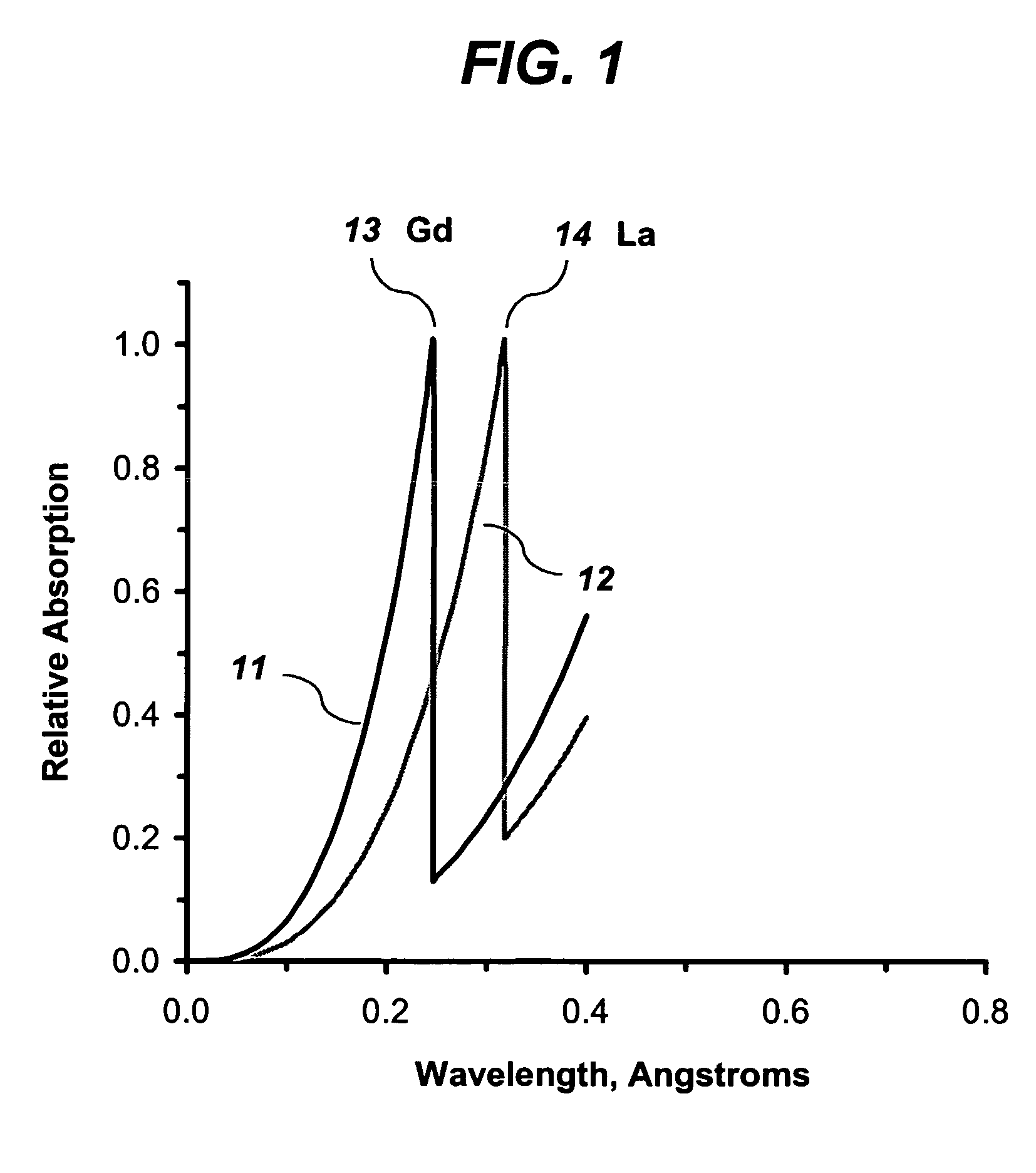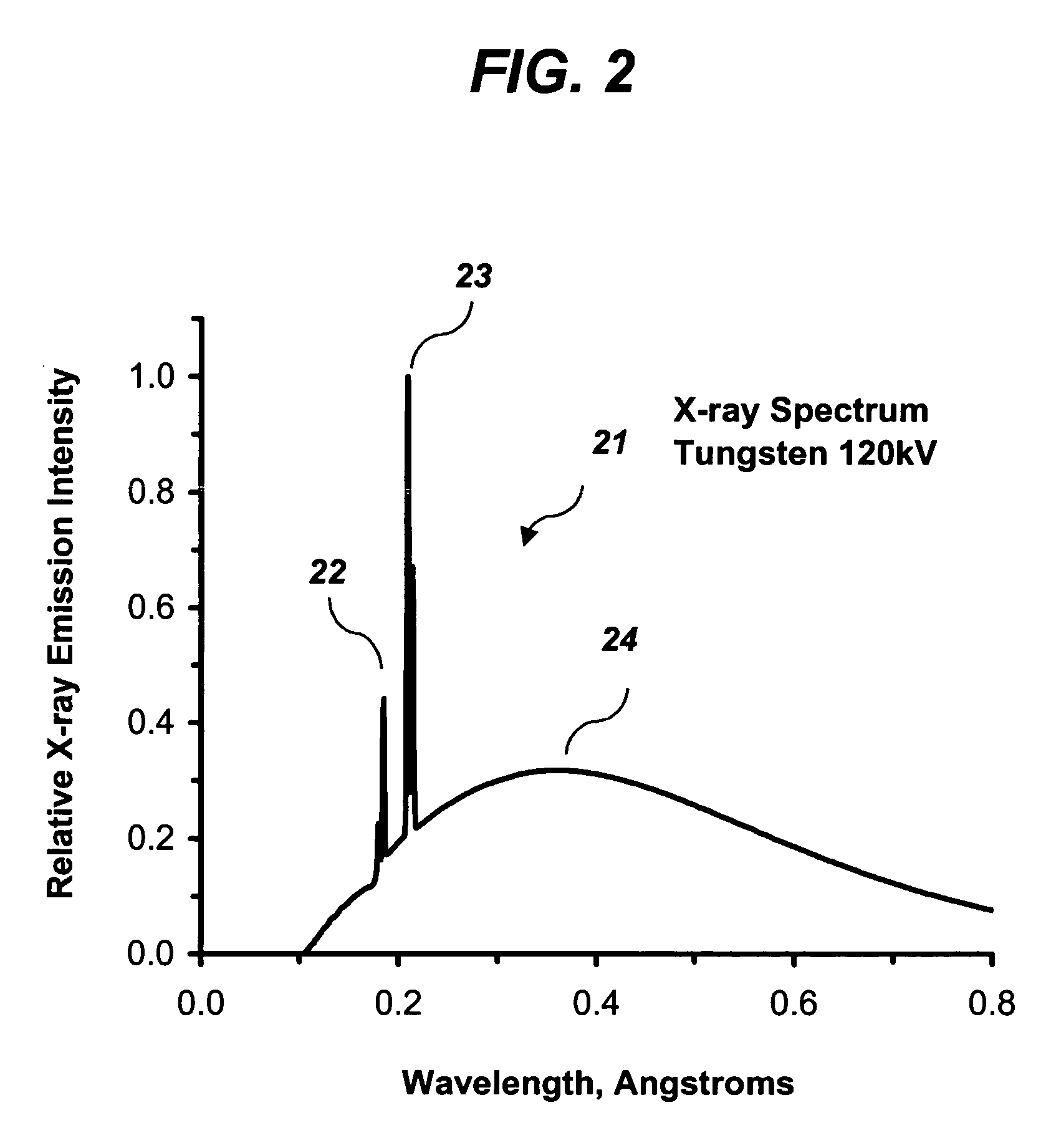Ionizing radiation imaging system and method with decreased radiation dose
a radiation dose and imaging system technology, applied in tomography, instruments, applications, etc., can solve the problems of induction of fatal cancer, inability to detect ionizing radiation, and many documented harmful effects of exposure to ionizing radiation,
- Summary
- Abstract
- Description
- Claims
- Application Information
AI Technical Summary
Problems solved by technology
Method used
Image
Examples
Embodiment Construction
[0015]The present invention provides an ionizing radiation imaging system and method that reduces the radiation dose imparted on a object being imaged, while attaining a high quality image. By matching a peak emission of a source to a peak absorbance of a detector, high quality images can be attained using a minimized radiation dose to a object to be imaged.
[0016]FIG. 1 illustrates a plot 11 of relative energy absorption versus energy wavelength for gadolinium and a plot 12 of relative energy absorption versus energy wavelength for lanthanum. Gadolinium and lanthanum are examples of atomic species that can be included in a detector according to the present invention. Plot 11 shows an absorption edge 13, or absorption maximum, for gadolinium at energy of wavelength of about 0.25 Angstroms (A). Plot 12 shows an absorption edge 14 for lanthanum at about 0.32 A. As can be seen in plots 11 and 12, maximum absorption of energy by an atomic species occurs at a wavelength that is at or just...
PUM
| Property | Measurement | Unit |
|---|---|---|
| wavelength | aaaaa | aaaaa |
| wavelengths | aaaaa | aaaaa |
| wavelengths | aaaaa | aaaaa |
Abstract
Description
Claims
Application Information
 Login to View More
Login to View More - R&D
- Intellectual Property
- Life Sciences
- Materials
- Tech Scout
- Unparalleled Data Quality
- Higher Quality Content
- 60% Fewer Hallucinations
Browse by: Latest US Patents, China's latest patents, Technical Efficacy Thesaurus, Application Domain, Technology Topic, Popular Technical Reports.
© 2025 PatSnap. All rights reserved.Legal|Privacy policy|Modern Slavery Act Transparency Statement|Sitemap|About US| Contact US: help@patsnap.com



